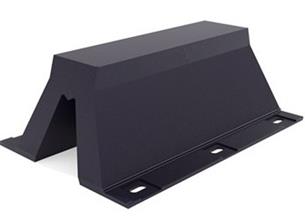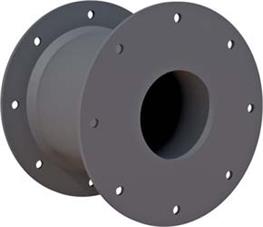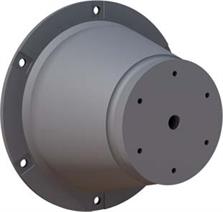Cylindrical Fenders are simple to install and operate which makes these units an economical solution for remote locations and for multi user berths where vessel types cannot always be predicted.

With advantages of progressive load-deflection Cylindrical Fenders are suitable for both large and small vessels, and with a wide choice of sizes and diameter ratios , the performance of cylindrical fender can be closely matched to requirements in each case.

Cylindrical Rubber Fenders Specification

|
Cylindrical Fender Specification |
||||
|
Size |
Outer Diameter D (mm) |
Inner Diameter |
Approx. Weight kg/m |
Length |
|
CY 150xL |
150 |
75 |
16 |
All lengths can be supplied to meet the customers’ request |
|
CY 200xL |
200 |
100 |
39 |
|
|
CY 250xL |
250 |
125 |
46 |
|
|
CY 300xL |
300 |
150 |
66 |
|
|
CY 350xL |
350 |
175 |
90 |
|
|
CY 400xL |
400 |
200 |
118 |
|
|
CY 500xL |
500 |
250 |
184 |
|
|
CY 600xL |
600 |
300 |
265 |
|
|
CY 700xL |
700 |
350 |
361 |
|
|
CY 800xL |
800 |
400 |
471 |
|
|
CY 900xL |
900 |
450 |
596 |
|
|
CY 1000xL |
1000 |
500 |
736 |
|
|
CY 1100xL |
1100 |
550 |
890 |
|
|
CY 1200xL |
1200 |
600 |
1060 |
|
|
CY 1300xL |
1300 |
650 |
1244 |
|
|
CY 1400xL |
1400 |
700 |
1442 |
|
|
CY 1500xL |
1500 |
750 |
1656 |
|
|
CY 1600xL |
1600 |
800 |
1884 |
|
|
CY 1700xL |
1700 |
850 |
2127 |
|
|
CY 1800xL |
1800 |
900 |
2384 |
|
|
CY 1900xL |
1900 |
950 |
2657 |
|
|
CY 2000xL |
2000 |
1000 |
2944 |
|
Note:
1.Other sizes besides the left also can be customized.
2.Can be customized in various lengths.
Cylindrical Fenders can be fixed to many types of structure and attached in several different ways – horizontally, vertically or diagonally and can also be adapted to suit wharf corners. The fenders are suspended either by chains, support bars or brackets depending on their size and intended application.
Feature:
1. Simple and economical design, easy to install
2. Choice of mounting systems to suit different structures and applications
3. Sizes from 150mm to 2000mm diameter in almost any length
4. Thick fender wall resists abrasion, even after years of heavy use
5. Progressive load-deflection characteristics

 info@dolphinmarines.com
info@dolphinmarines.com

